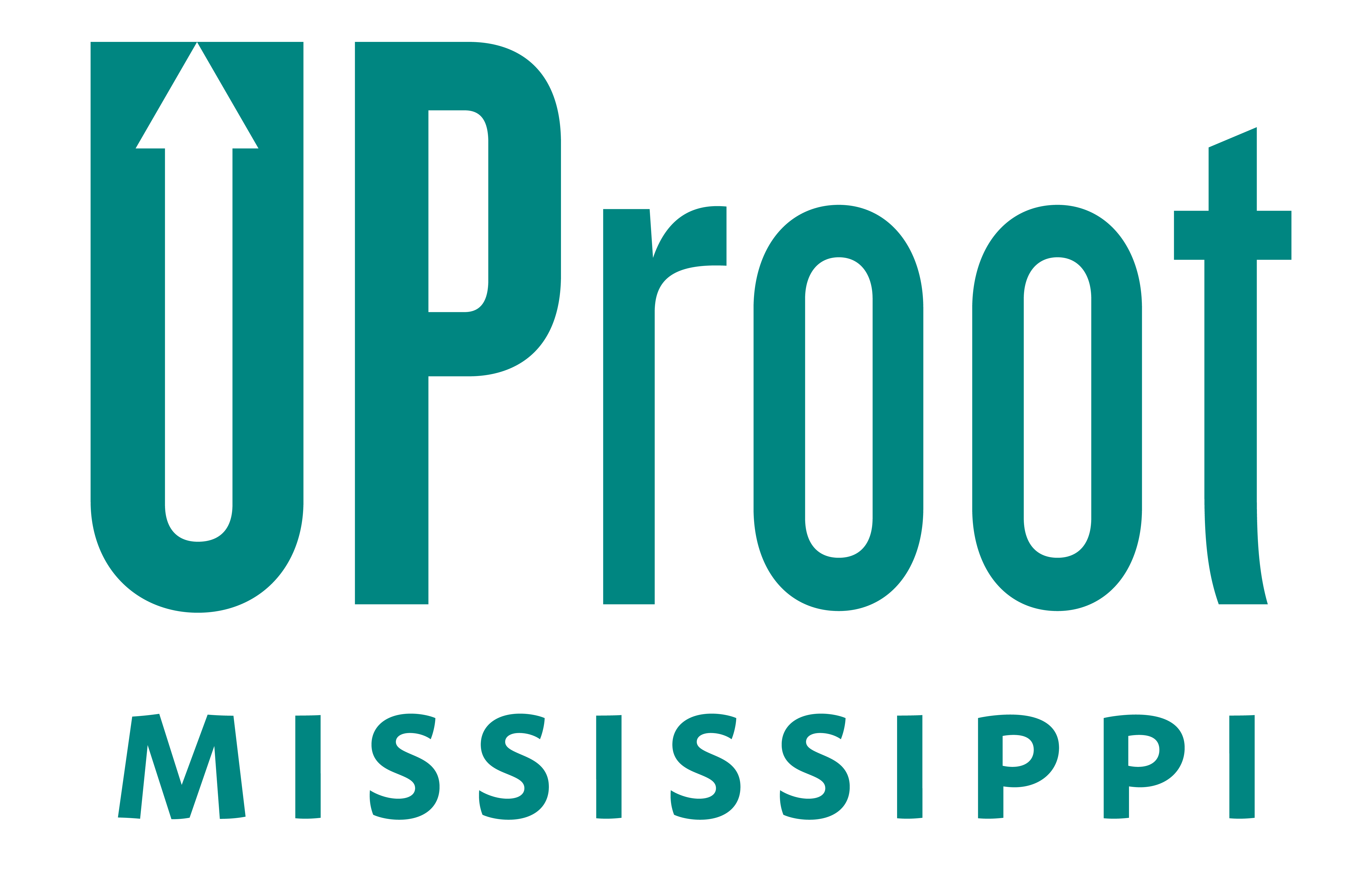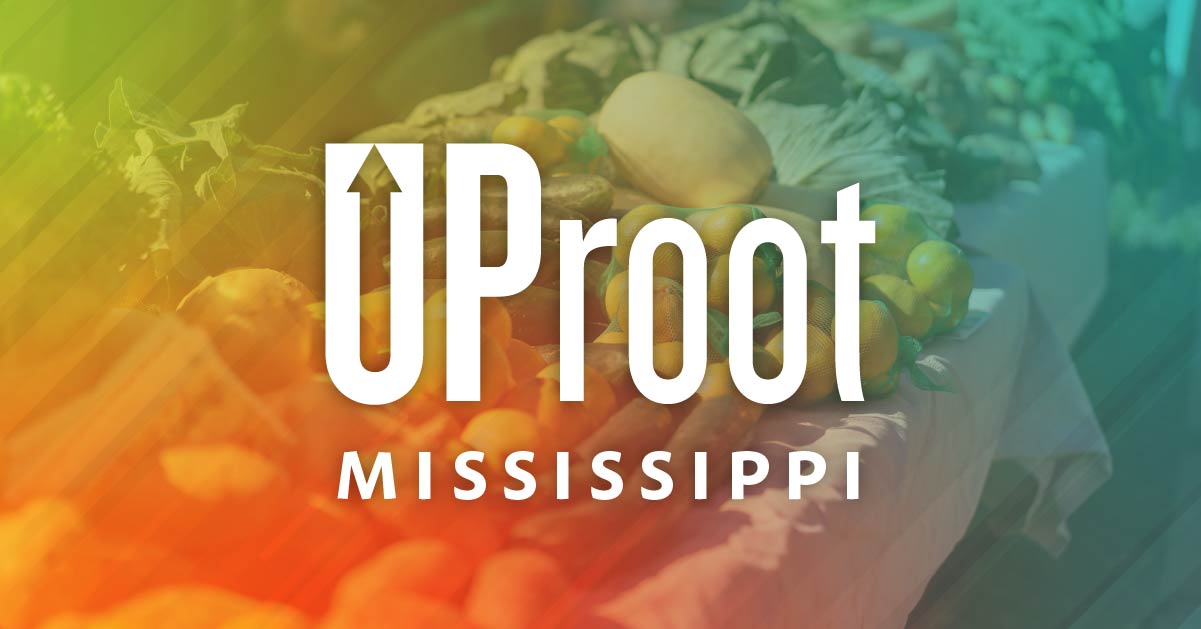Our 2022 State Health Improvement Plan (SHIP) identifies food insecurity as one of Mississippi’s most pressing issues and a primary cause for high obesity rates in the state. However, programs like the community gardens at The Good Samaritan Center help local residents live healthier lives. The garden, 2,000 square feet of urban greenery, serves as an example of how transformative community effort can be.
Known locally as “Good Sam,” The Good Samaritan Center has provided food assistance, clothing, and community support services to the Jackson-Metro area for over 40 years. Good Sam’s mission to create a “network of helping hands” is most evident in Midtown, a central neighborhood in the city of Jackson, where local residents and organizations work together to ensure care resources reach the people who need them most.
We spoke with Sarah Gayden Hammond, Director of Volunteers at Good Sam, and volunteers Mary Hauk and Jeannette Morgan about the gardening program and how it’s making an impact.
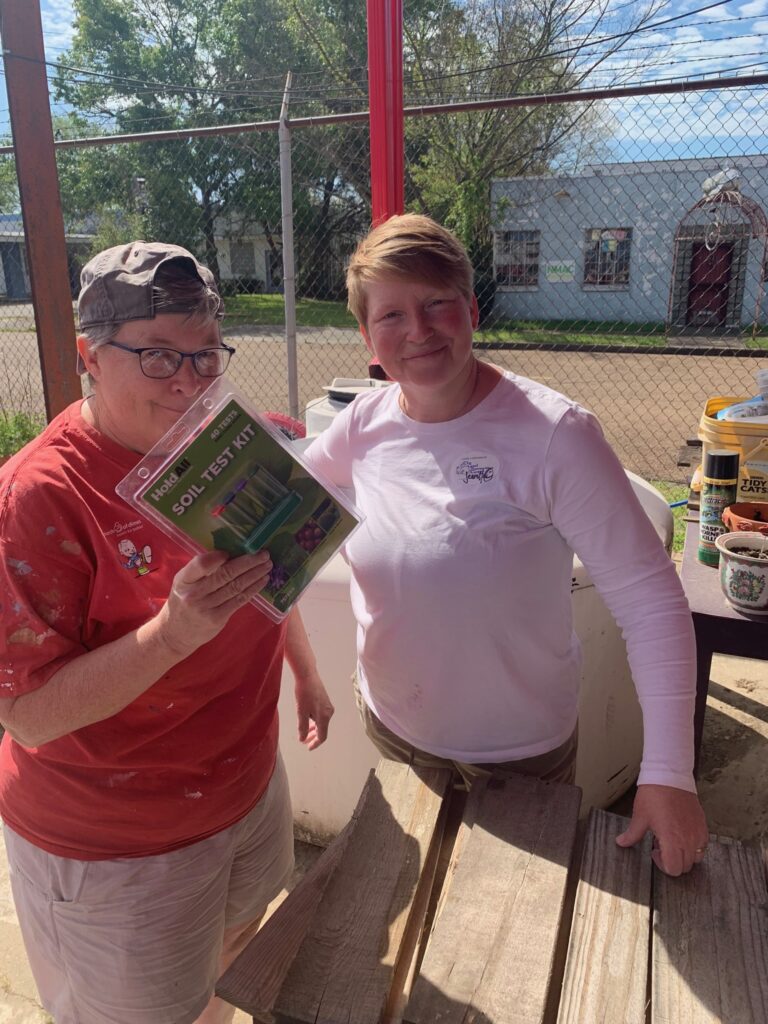
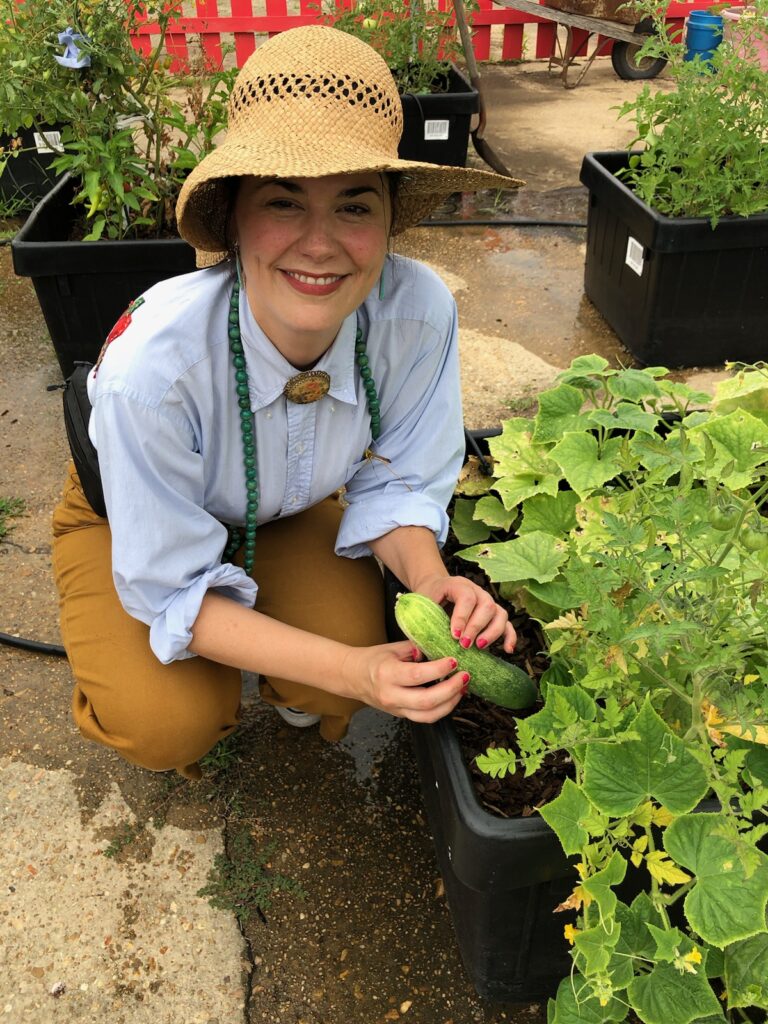
What inspired the Good Samaritan Center to start this program?
Hammond: As I understand it, in 2014, Kathy Clem, the CEO of the Good Samaritan Center, wrote a grant and Whole Foods fulfilled it. The original intention behind the grant was to grow produce in our garden that would supplement our pantry. There would also be a moveable kitchen and cooking component, but that component didn’t get funded. There is still the possibility of hosting a cooking experience for clients and volunteers, though, if we find the right partnership.
Hauk: Like Sarah said, the original grant focus was not very doable in the space that we had available. So from there the garden evolved to be a space for teaching and urban greening. Whatever we harvest does go into our pantry and also goes out to families in Midtown, like our seniors at Golden Key.
Were any other partners involved in getting this program started?
Hammond: Whole Foods was very involved. And also one of our long-term partners in the garden is Matt Casteel, who operates his own small business, Wurmworks, which is also in Midtown. He builds worm boxes, makes organic produce, and donates vermicompost to our garden. Actually, the vegetables that were planted this season were planted with Casteel’s vermicompost. We also worked with Mississippi Cold Brew coffee and used coffee grinds that they had donated in the back bed. That was really wonderful, and they helped us plant herbs.
What groups volunteer at the garden?
Hammond: Whenever possible, we try to bring our regular volunteers into the garden. But outside of our volunteers, we have different groups come in and spend time in the garden. We’ve planted sunflowers with Reverend Annie Elliott’s class from St. Andrew’s. St. Richards brought their second graders, and it was great seeing them. We had a youth group from UMMC Madison stop by yesterday and help us fix a bed. They also helped us tie up our tomatoes after they’d been blown down after the storm. We also have volunteers, like the missionaries from the Church of Jesus Christ of Latter-Day Saints, come every Friday. So, we have many different groups volunteer and help out at the garden.

How do kids react once they’ve successfully grown produce? Has a participant ever shared what they’ve learned from the process?
Hauk: We had a group last year, from one of the local churches. And they had a whole bunch of little kids, which is always fun. I took them around on a little tour of the garden and I’m explaining what’s growing and where things are. And then 30 or 40 minutes later, a couple other kids came outside and I heard the first kids saying, ‘let me take you on a tour of the garden’.
And those kids took them around the garden and explained here’s this and here’s that and here’s the strawberry. And about 20 minutes later, more kids came out, and the second group of kids took them on a tour of the garden. So they’re finding that they’re not necessarily seeing the work through their own arc of time, but they’re seeing it through someone else’s arc.
Hammond: We use social media to make those connections. So recently the sweet tomatoes that the Millsaps Chi Os planted have borne fruit. And then we had some yellow pear tomatoes that JSU students planted go into our pantry. I was able to name the students who planted those back in March and make a Facebook post about it. In that way, they’re able to see progress in the garden and see how their effort is making a difference.
Are there any standout moments?
Morgan: There was a young woman in one of the volunteer groups that wanted to be a cook, and she was planning to go to culinary school, but she had never actually grown her own herbs. She knew that as a potential chef, though, that she would need to have that knowledge.
So she was asking questions about growing herbs and was really enjoying planting and learning about soil composition and what all was needed, especially in a container garden. There was also another time, we came across kids who were actually from farms and knew about growing, but it was a different experience using a planter and navigating a smaller garden.

The State Health Improvement Plan (SHIP) aims to reduce food insecurity by 10% in the next five years by increasing food access and eliminating food deserts across the state. How does this program help with that effort?
Hammond: We’ve got tomatoes and peppers and okra. We have an eggplant coming along. It’s a whole rainbow of local sustainable produce! And it’s enough to help supplement our pantries now and then, and also donate to our seniors on disability.
Hammond: I think it’s a wonderful thing, and it’s like a movement to have gardens as part of an organization’s work. There are a lot of community health centers who have jumped on board, you know, with the goal of helping address food needs and help the city overall.
How can other nonprofit organizations start projects like this one? Any advice on how they can get their community involved?
Hauk: This is a great opportunity for an afterschool program because kids really love it. They love being in the garden and they love being able to get dirty. I think they love that arc too, of planting and then seeing the plant sprout and then seeing it grow and then boom–there’s a sunflower or a squash or whatever. And starting the garden doesn’t have to be complicated or expensive. We use recycled pots, storage bins, whatever we can reuse to grow most of our food.
Morgan: Our ingredients are just time, volunteers, knowledge, and the ability to get dirty. Also, just wanting to do it and understanding why we do it and why it’s so important to our community. I’d say you just have to have good core volunteers and a good coordinator to lead them.
Hammond: I’ll say the first thing that you need to do is visit a garden. We’re really fortunate to have good gardens here in Mississippi, since we have a rural heritage here. We have the Mississippi Natural Science Museum, the Mississippi Museum of Art, the Ridgeland Wildflower Field. Of course, we also have our garden here at the Good Samaritan Center. But I really think when you visit a garden and you sit in that kind of space, what you want out of a garden will rise up inside of you. And then, just like that, an initiative forms and you will come in contact with people who have the knowledge and the expertise and the time to help you build the garden you’re supposed to have.
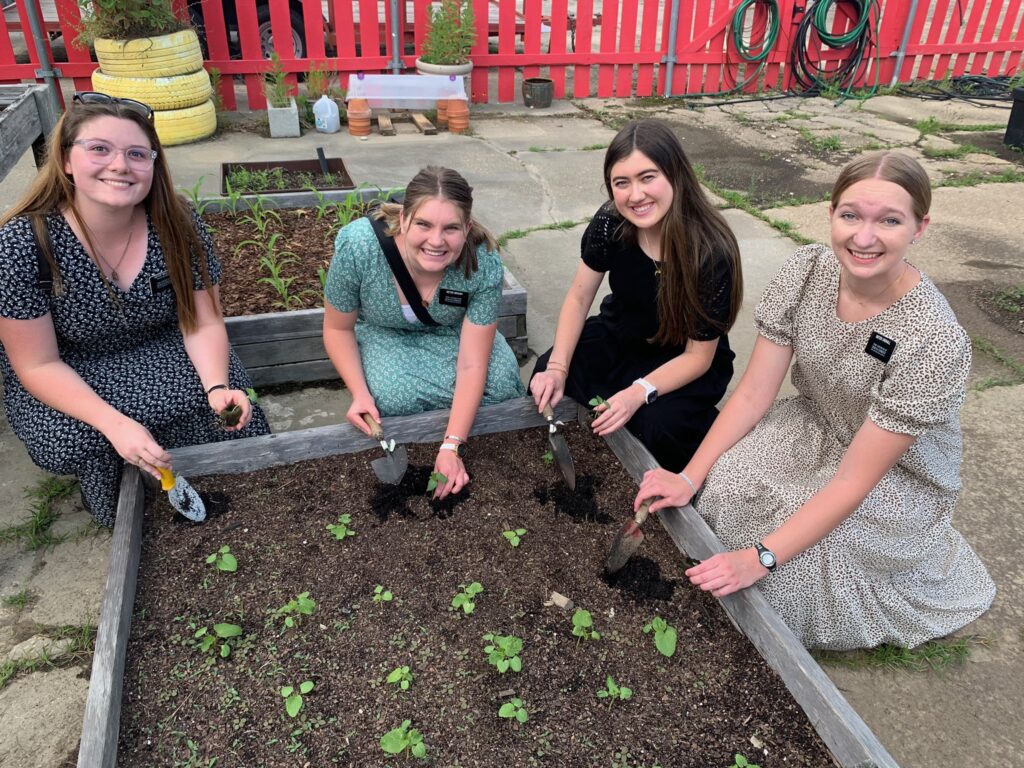
Why is this program so important to the Jackson metro area and Mississippi in general?
Hammond: Above all, I think it is a measure of community resilience. We have a lot of problems to solve in Mississippi, but we cannot solve those problems unless we have meaningful relationships with others.We solve everything through our social relationships, and I really think that when we spend time with others in a garden, we work out our own problems. We work out collective problems, we relationship-build, and we create the social network that needs to be in place for us to solve the problems that we need to solve in this state.
And that happens at the local level. You know, people try to solve problems at a really large level, but every community and every neighborhood has its own resources, its own challenges, and its own gifts, and people need to be brought together in a deep and meaningful way to make progress happen. I think a garden is part of that.
Morgan: I agree, and I think if everybody knows how to grow, just the simplest thing, it gets you started on a path of understanding the simple nature of everything. That it’s not magic, that everyone can have a garden or a beautiful front porch and enjoy it at the same time and be outside. Connect to nature, basically. And connect to the food that you eat. I hope that’s what people get from the garden.
Is there anything else you’d like to tell our audience?
Hauk: You don’t have to start with a grand garden. You can start with a bucket and a plant.
Responses edited for brevity and clarity. Views expressed in interviews published on this site are solely those of the interviewees.
